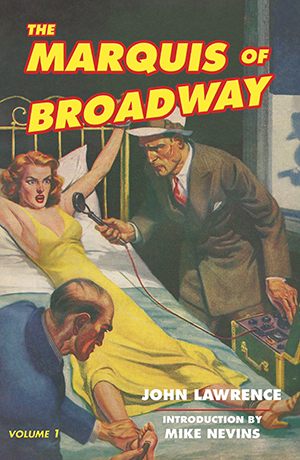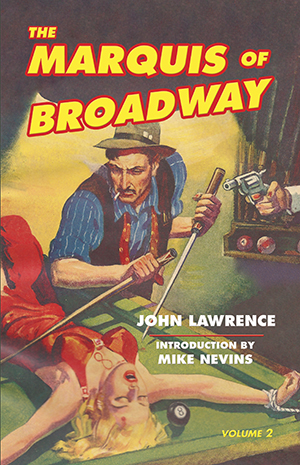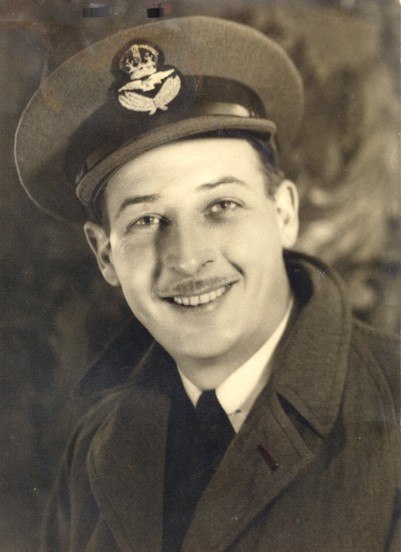




Table of Contents
In
Re: John Lawrence by Mike Nevins
John Lawrence: A Checklist
Volume One
1. Broadway Malady (Dime Detective Magazine, February 1937)
2. Live Man’s Shoes (Dime Detective Magazine, August 1937)
3. Escape Mechanism (Dime Detective Magazine, October 1937)
4. Natural Killer (Dime Detective Magazine, December 1937)
5. Boomerang Blastout (Dime Detective Magazine, February 1938)
6. Body About Town (Dime Detective Magazine, April 1938)
7. Witness! Witness! (Dime Detective Magazine, June 1938)
8. Twelve Morticians Named Green (Dime Detective Mag., August 1938)
9. Death in Round Numbers (Dime Detective Magazine, November 1938)
10. The Stars Said Murder (Dime Detective Magazine, March 1939)
11. Old Wives’ Tale (Dime Detective Magazine, April 1939)
12. Death for Twelve Months (Dime Detective Magazine, June 1939)
13. Man Hunt (Dime Detective Magazine, October 1939)
14. Albino Alibi (Dime Detective Magazine, December 1939)
Volume Two
15.
Death in the Side Pocket (Dime Detective Magazine, Jan. 1940)16.
Inspector’s Funeral (Dime Detective Magazine, March 1940)17.
Murder Must Go On! (Dime Detective Magazine, June 1940)18.
The Death of the Party (Dime Detective Magazine, August 1940)19.
Gallows 9 (Dime Detective Magazine, October 1940)20.
Nothing for Christmas (Dime Detective Magazine, December 1940)21.
Floater (Dime Detective Magazine, June 1941)22.
Murder Come Back to Me (Dime Detective Magazine, January 1942)23.
Murder in the Family (Dime Detective Magazine, May 1942)24.
Death of a Dog (Dime Detective Magazine, July 1942)25.
Military Secret (Dime Detective Magazine, October 1942)26.
A Frame for the Marquis (Dime Detective Magazine, June 1948)Look for sets on Amazon.com, E-Bay.com or AbeBooks.com or alternately contact me for more information.
The Marquis of Broadway series is Lawrence’s chief claim to a place in crime fiction history. Lieutenant Martin Marquis and the men of his Broadway Squad are not only the most vicious group of cops in the literature but support a system in their own image, ruthless and tyrannical almost beyond imagining. With 22 legalized murderers under his control, Marquis’s job is "to rule half the city’s thieves" or, more precisely, the other half of the city’s thieves. Marty is trimly built, dapper, deceptively slight, with a round and weathered face and small deep-set blue eyes. Like his creator, he prefers to be seen in fancy clothes. His habitual attire includes an imported derby, a tight black silk scarf, black kid gloves and shoes, a dark suit, an ankle-length black Chesterfield. Sound like a gangster? Marquis’s behavior does nothing to change that perception. He thinks of himself as a polished and quiet man of culture but his immaculate appearance and good taste are a veneer, poorly concealing the brutal and insecure mugg from Avenue A who worships power with the intensity of a fanatic. He enjoys being mistaken for a vice-president, supports a widowed mother and two sisters in Brooklyn and visits them once a month, has had his Central Park West apartment redecorated "in proper old oak and leather" like an English gentleman’s den, but he’s just a gangster with a badge.